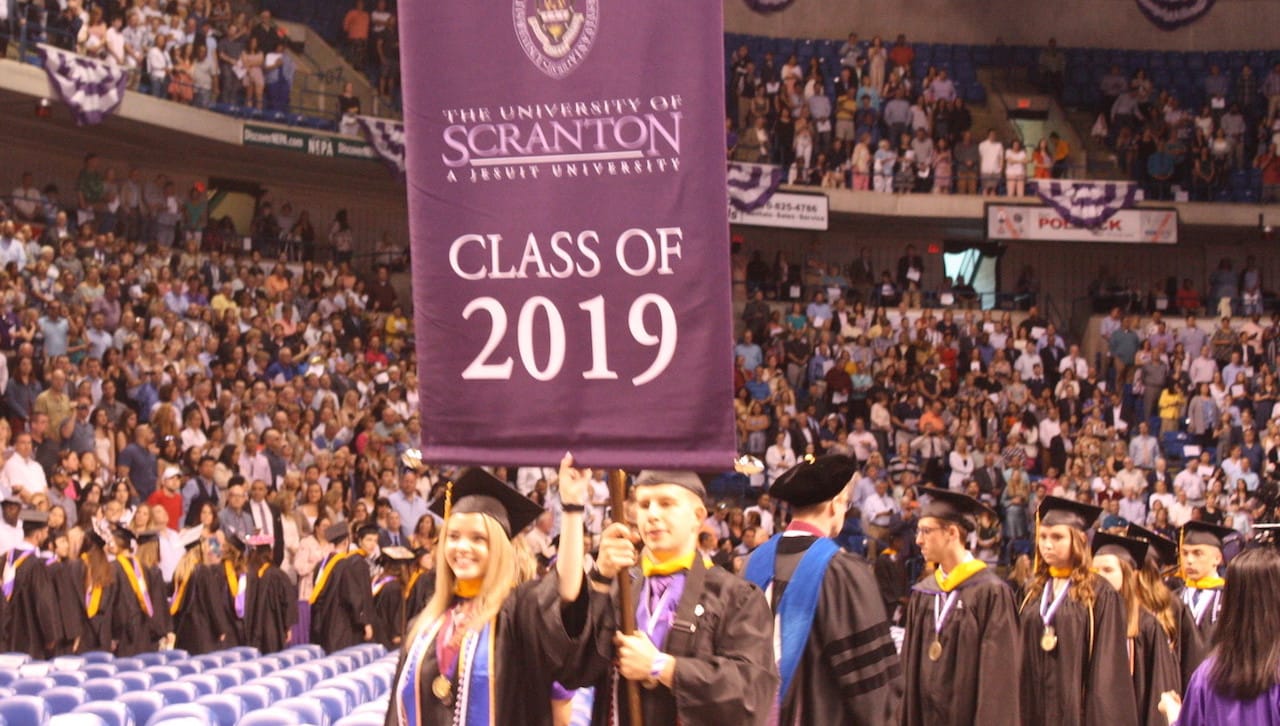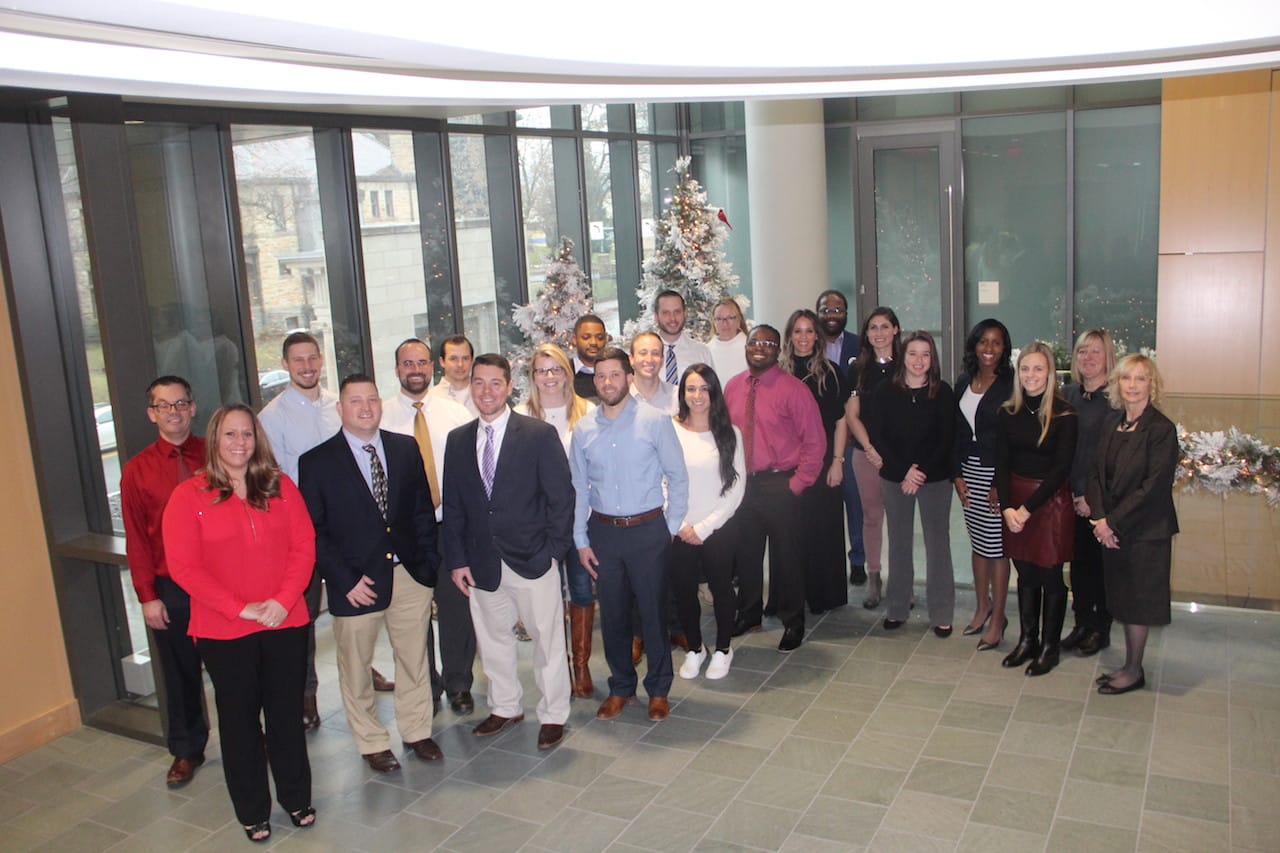Scranton 2019 Grads Log a 99 Percent Success Rate

Ninety-nine percent of The University of Scranton’s class of 2019 graduates, at both the undergraduate and graduate level, reported being successful in their choice of career path of either employment or pursuing additional education within six months of graduation. The “First Destination Survey” report by Scranton’s Gerard R. Roche Center for Career Development is based on career success data obtained for 77 percent of the undergraduate class. This “knowledge rate,” or percentage of graduates for whom their career outcome is known, exceeds the National Association of College Employers recommended rate of 65 percent. The knowledge rate for members of the University’s graduate class of 2019 is 83 percent.
For members of University’s class of 2019 earning a bachelor’s degree, 97 percent were successful in obtaining their goal of full-time employment, and 100 percent were successful in obtaining their goal of attending graduate or professional school.
The average (mean) salary is $54,766, based on the bachelor’s degree graduates that provided salary information. The average salary varied by major. The highest average salaries reported are in computer science ($75,600), nursing ($74,398), economics ($67,500) and information technology ($67,380).
Geographically, of those employed, 83 percent reported working in Pennsylvania, New York and New Jersey.
Additionally, the report for undergraduate success shows: 54 percent were seeking full-time positions; 43 were seeking additional education; 2 percent were seeking part-time positions or another intentional career path as defined by the graduate, with just less than 1 percent still seeking employment. Seventy-nine percent (79%) of the Class of 2019 completed at least one experiential learning opportunity during their education at Scranton.
For master’s degree graduates, the report shows success with 97 percent seeking full-time employment; 1 percent seeking additional education; 1 percent seeking part-time employment and just 1 percent still seeking employment. The average (mean) salary for 2019 master’s degree graduates is $69,494, based on the graduates that provided salary information. Salaries reported vary by degree programs. The highest average salaries reported are for graduates with master’s degrees in nurse anesthesia ($170,950), international business MBA ($132,500), healthcare management ($123,793) and family nurse practitioner ($94,674).
Of those employed, 73 percent are working in Pennsylvania, New York and New Jersey.
For University’s class of 2018, 98 percent of its undergraduate class and 99 percent of its graduate class reported being successful in their choice of career path of either employment or pursuing additional education within six months of graduation.

Graduates with master’s degrees in nurse anesthesia reported the highest average salaries of $170,950, according to data collected by Scranton’s Gerard R. Roche Center for Career Development for the class of 2019 “First Destination Survey” report. Pictured are members of the Nurse Anesthesia program who graduated as members of the University’s class of 2019.






